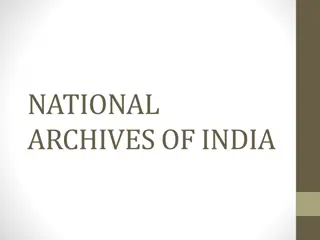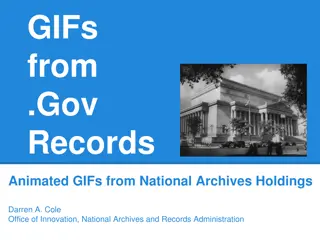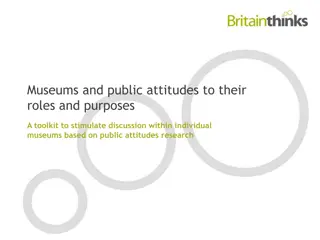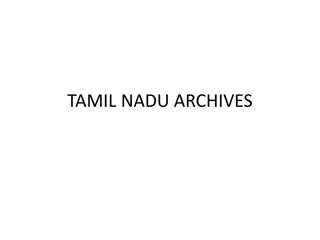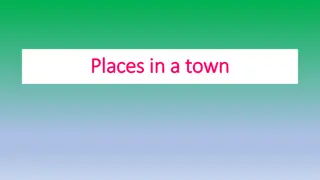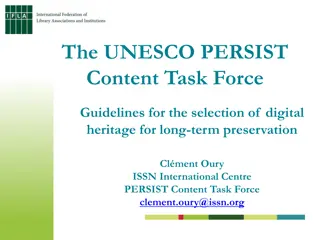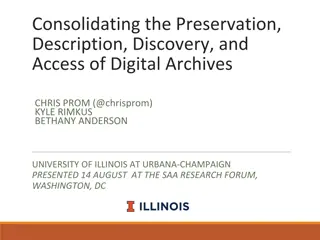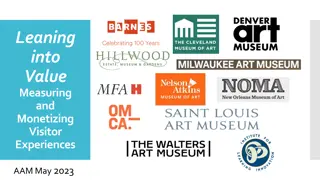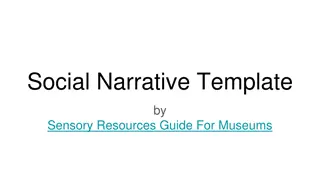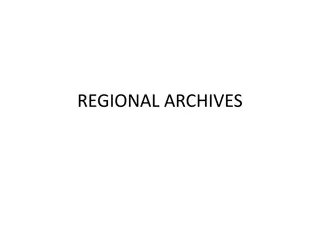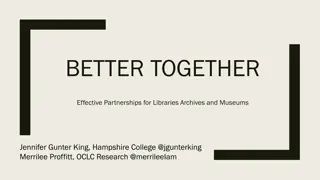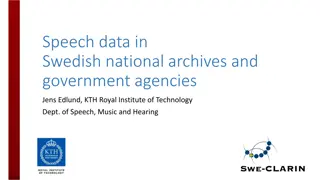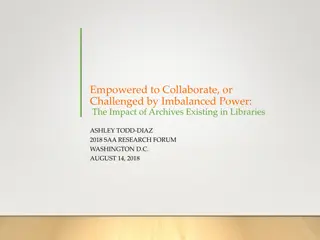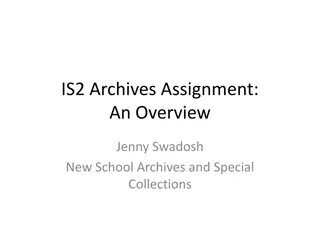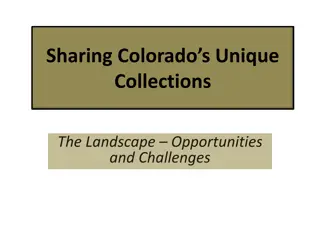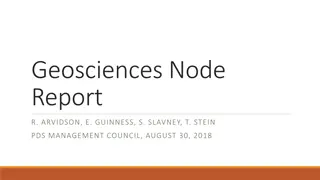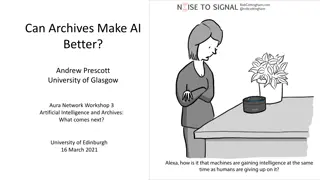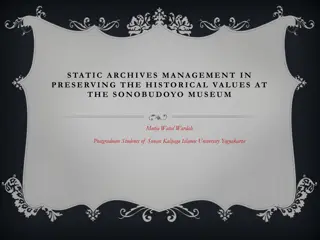Explore the Fascinating World of Archives and Museums in BA Program - Third Year
Delve into the rich history and significance of archives and museums, covering topics like defining museums and archives, the history of renowned museums, and the emergence of new museum and archive formats. Discover the cultural heritage, preservation efforts, and evolving roles of these institutions through intriguing case studies.
Download Presentation

Please find below an Image/Link to download the presentation.
The content on the website is provided AS IS for your information and personal use only. It may not be sold, licensed, or shared on other websites without obtaining consent from the author. Download presentation by click this link. If you encounter any issues during the download, it is possible that the publisher has removed the file from their server.
E N D
Presentation Transcript
SEC IV: SEC IV: Archives and Museums Archives and Museums BA PROG Third Year
Topics in Course I. Defining museums and archives II. History of the setting up of museums: case study of Indian Museum, Calcutta; Salarjung Museum, Hyderabad; and National Museum, Delhi (one case study) III. History of the setting up of archives: Case study of the National Archives of India, Delhi (one case study) IV. New kinds of museums and archives: virtual; digital; crafts; media. A visit to a museum and/or archive is part of this course.
Unit 1: Defining museums and archives The museum and archive keep not only artefacts and old papers of past but represent the scientific knowledge and systematic orders of crafts, paintings, manuscripts, records, industrial arts, archaeological collections, etc. The museum and archive are the repositories of history, culture, heritage, natural history, zoology, geology, ethnography, anthropology, etc. The main aims of the museum and archive in the 19thand 20thcentury were public education, documentation, classification, conservation and preservation of history and culture of India (Guha-Thakurta 2005, Kavita Singh 2003, and Nicolas Dirks 2001). The setting up of a museum and archive was not only a moral duty for the government Indeed, it was also a matter of power and knowledge. If the national museum is to celebrate the ancient culture of your state (Kavita Singh 2003), the national archive is to empower the state.
Unit 2 and 3: History of the setting up of Museums and Archives Indian Museum of Calcutta (1866): A Colonial Wonder House and The Great Encyclopaedic Museum. In the case study of the Indian Museum, we shall discuss the history of early colonial museums and their collaboration with colonial archaeology, scientific knowledge and power. We shall try to understand why the Indian Museum was known as a Wonder House (Ajaib Ghar). National Museum of India (1949): From Exhibition to the National Museum In the case study of the National Museum, we shall study the making of National Museum in New Delhi. We shall discuss why the Nehruvian Government constructed the National Museum in New Delhi. National Archives of India (1891): Record Rooms and Archives In the case study of the National Archives of India, we shall discuss the evolution of the National Archives of India from the Colonial Period to the Post Colonial Period. We shall discuss why did the Colonial and Indian Governments build archives and record rooms. We shall try to understand what is the relationship between archives and the state.
Unit 4: New kinds of museums and archives: virtual; digital; crafts; media. Every person, family and agency create records, make objects and collect artefacts. Some of these records, objects and artefacts are valuable because they represent our social reality, memory, emotion, and identity. Therefore, we need to preserve and conserve these selected records and artefacts for our future generation in affordable conditions (money, time and space). In the last unit, we shall discuss how many new types of museums and archives we have near us. We shall try to understand how the age of internal provides affordable conditions.
Readings Essential Readings Guha Thakurta, Tapati. Monuments, Objects, Histories: Institutions of Art in Colonial India. Delhi: Permanent Black, 2004. A Guide to the National Museum. New Delhi: National Museum, 1997. Agarwal, O.P. Essentials of Conservation and Museology. Delhi: Sundeep Prakashan, 2007. Agarwal, O.P. Pustakalaya Samagri Aur Kala-Vastuon Ka Parirakshan. Delhi: NBT, 1999. Edson, G. and D. David. Handbook for Museums. London: Routledge, 1986. Kathpalia, Y. P. Conservation and Restoration of Archive Materials. UNESCO, 1973. Ridener, J. From Foiders to Post Modernism: A Concise History of Archival Theory. LLC: Litwin Books, 2009. Some Suggested Readings Singh, Kavita. 2003. The Museum is National: The Nation as Narrated by the National Museum New Delhi. In India: A National Culture, ed. Geeti Sen. New Delhi. Guha-Thakurta, Tapati. 2014. The Museum in the Colony: Collecting, Conserving, Classifying. In Singh, K. and Saloni Mathur. ed. 2014. No Touching, No Spitting, No Praying: The Museum in South Asia. Singh, Kavita and Saloni Mathur. ed. 2014. No Touching, No Spitting, No Praying: The Museum in South Asia. Bhattacharya, Sabyasachi. 2018. Archiving the Raj: History of Archival Policy of the Govt. of India with Selected Documents 1858-1947. Delhi: OUP Dirks, Nicholas. 2001. The Imperial Archive: Colonial Knowledge and Colonial Rule. In Caste of Minds: Colonialism and the making of modern India.


